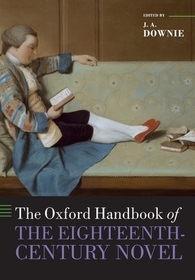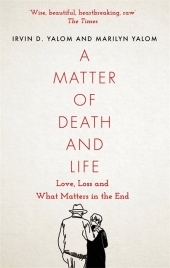
The Oxford Handbook of the Eighteenth-Century Novel
Series: Oxford Handbooks;
- Publisher's listprice GBP 43.49
-
20 777 Ft (19 787 Ft + 5% VAT)
The price is estimated because at the time of ordering we do not know what conversion rates will apply to HUF / product currency when the book arrives. In case HUF is weaker, the price increases slightly, in case HUF is stronger, the price goes lower slightly.
- Discount 10% (cc. 2 078 Ft off)
- Discounted price 18 699 Ft (17 808 Ft + 5% VAT)
Subcribe now and take benefit of a favourable price.
Subscribe
20 777 Ft

Availability
printed on demand
Why don't you give exact delivery time?
Delivery time is estimated on our previous experiences. We give estimations only, because we order from outside Hungary, and the delivery time mainly depends on how quickly the publisher supplies the book. Faster or slower deliveries both happen, but we do our best to supply as quickly as possible.
Product details:
- Publisher OUP Oxford
- Date of Publication 9 April 2020
- ISBN 9780198857334
- Binding Paperback
- No. of pages620 pages
- Size 240x167x33 mm
- Weight 1064 g
- Language English 532
Categories
Short description:
The Oxford Handbook of the Eighteenth Century Novel is the first published book to cover the 'eighteenth-century English novel' in its entirety. It is an indispensable resource for those with an interest in the history of the novel.
MoreLong description:
Although the emergence of the English novel is generally regarded as an eighteenth-century phenomenon, this is the first book to be published professing to cover the 'eighteenth-century English novel' in its entirety. This Handbook surveys the development of the English novel during the 'long' eighteenth century-in other words, from the later seventeenth century right through to the first three decades of the nineteenth century when, with the publication of the novels of Jane Austen and Walter Scott, 'the novel' finally gained critical acceptance and assumed the position of cultural hegemony it enjoyed for over a century. By situating the novels of the period which are still read today against the background of the hundreds published between 1660 and 1830, this Handbook not only covers those 'masters and mistresses' of early prose fiction-such as Defoe, Richardson, Fielding, Sterne, Burney, Scott and Austen-who are still acknowledged to be seminal figures in the emergence and development of the English novel, but also the significant number of recently-rediscovered novelists who were popular in their own day. At the same time, its comprehensive coverage of cultural contexts not considered by any existing study, but which are central to the emergence of the novel, such as the book trade and the mechanics of book production, copyright and censorship, the growth of the reading public, the economics of culture both in London and in the provinces, and the re-printing of popular fiction after 1774, offers unique insight into the making of the English novel.
As a vehicle for "critical and contextual commentary," the Handbook succeeds and occasionally even delights. Its two parts, divided chronologically pre- and post-1770, offer social, material, and literary context forsubsequent discussions of particular authors and genres.
Table of Contents:
Preface
PART I: 1660-1770: FROM 'NOVELS' TO WHAT IS NOT YET 'THE NOVEL'
The economics of culture 1660-1770
The Book Trade at the Turn of the Eighteenth Century
Business of Fiction: Novel Publishing, 1695-1774
Social Structure, Class, and Gender, 1660-1770
Making Publics and Making Novels: Post-Habermasian Perspectives
Influences on the early English novel
The Continental Influence on the Eighteenth-Century Novel: 'The English Improve What Others Invent'
Criss-crossing the Channel: The French Novel and English Translation
Religious Writings and the Early Novel
Travel Literature and the Early Novel
Secret History, Politics, and the Early Novel
Early 'Novels' and Novelists
Restoration Fiction
Testing the Market: Robinson Crusoe and After
Gulliver Effects
'Labours of the Press': The Response to Pamela
Samuel Richardson and the Epistolary Novel
Henry Fielding and the Progress of Romance
Novels of the 1750s
'Tristram is the Fashion': Sterne, Shandyism, and the sentimental novel
Epilogue: The English Novel at the end of the 1760s
PART II: 1770-1832: THE MAKING OF THE ENGLISH NOVEL
Literary Production 1770-1832
The Book Trade 1770-1832
The Rise of the Illustrated English Novel to 1832
Authors, readers, reviewers, and critics, 1770-1832
Social Structure, Class and Gender, 1770-1832
'Male' and 'Female' novels? Gendered Fictions and the Reading Public, 1770-1832
Reviewing the Novel
'Ordering' Novels: Describing Prose Fiction, 1770-1832
Novels and Novelists, 1770-1832
The Rise and Decline of the Epistolary Novel, 1770-1832
Developments in Sentimental Fiction
Philosophical Fictions and 'Jacobin' Novels in the 1790s
The Anti-Jacobin Novel
The Gothic Novel and the Lingering Appeal of Romance
Novel and Empire
The Popular Novel 1790 to 1820
The Evangelical Novel
'Pictures of domestic Life in Country Villages': Jane Austen and the 'Realist' Novel
Authorizing the Novel: Walter Scott's Historical Fiction
Parody and Satire in the Novel, 1770-1832
Epilogue






